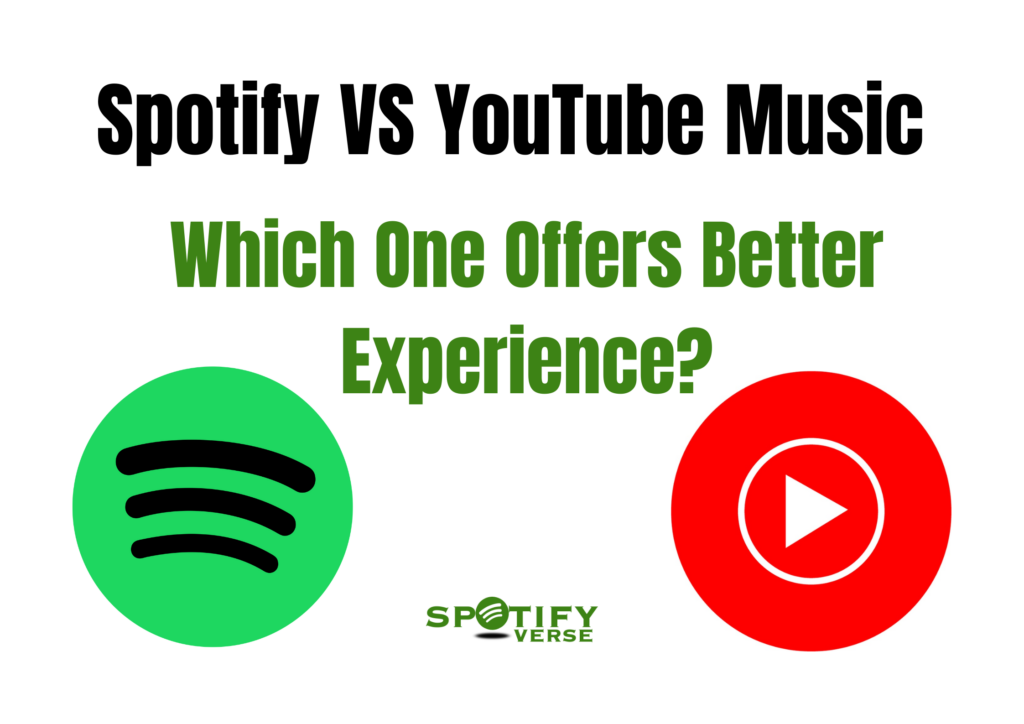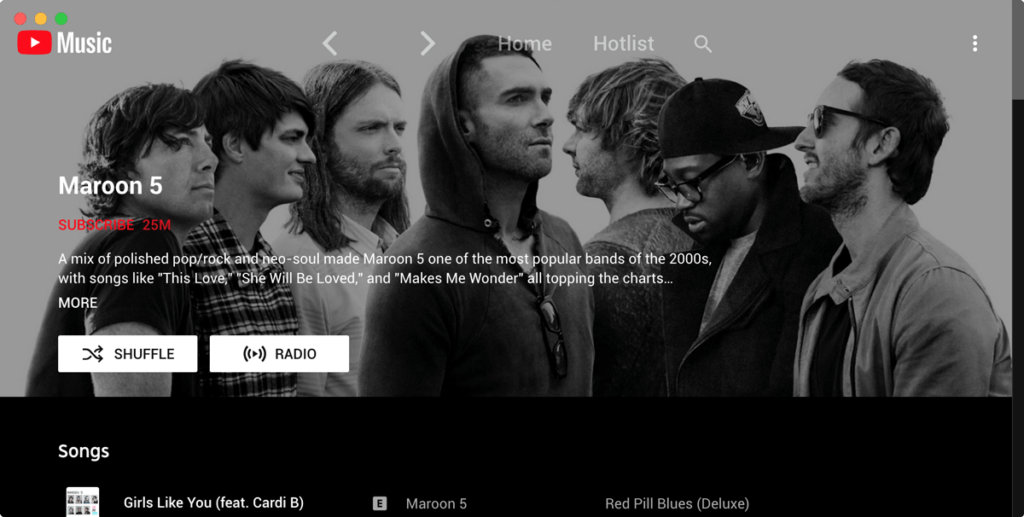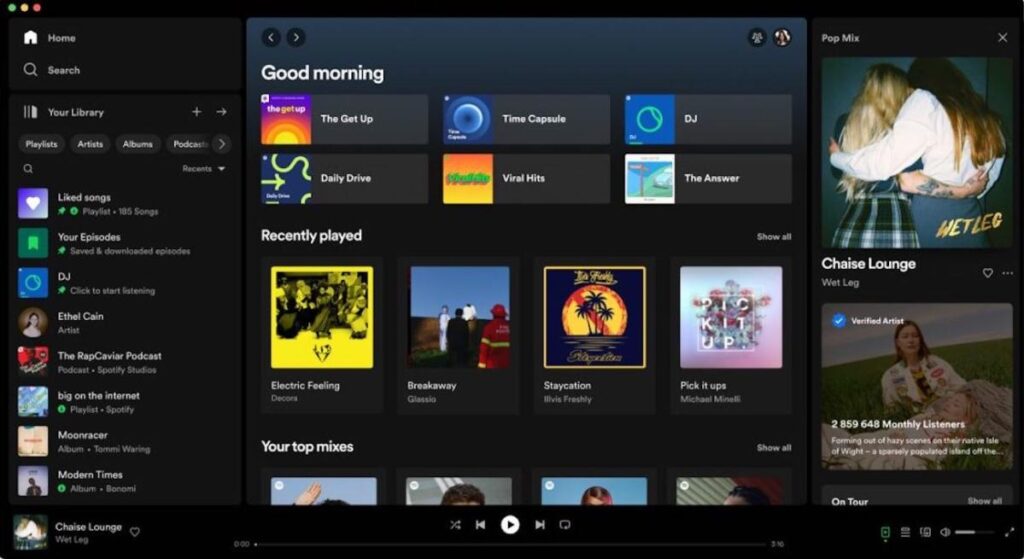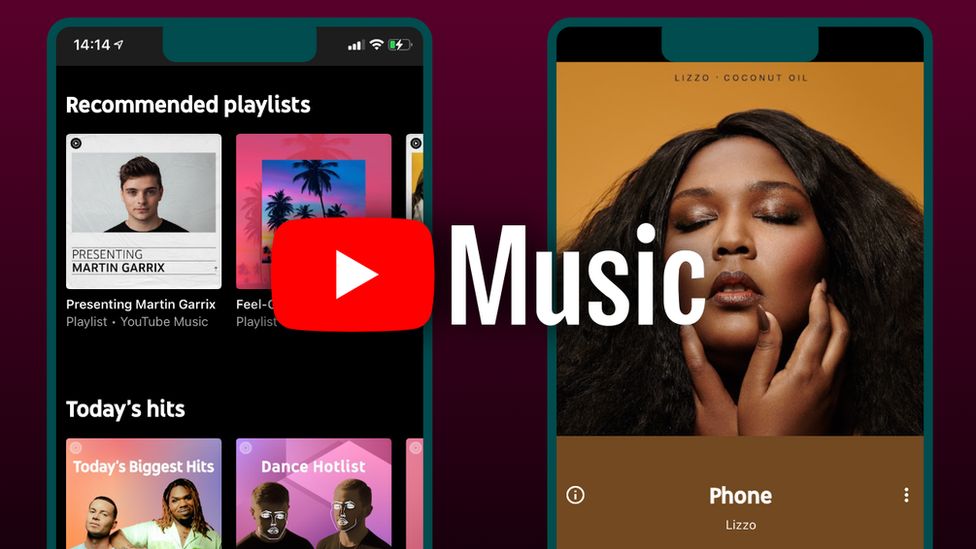Music streaming services have entirely transformed the way we listen to music. One way or another, musicians can expand their fan base, and music fans can easily access a vast catalog of tracks from different musicians and genres. Due to their ease, well-curated playlists, and tailored recommendations, music streaming services are becoming increasingly popular among consumers worldwide. A closer look uncovers distinct features and a range of functionalities that set each music streaming service apart, even though the category may seem saturated with parallel options.

In this article, we unpack and compare the two giants of the music streaming game, Spotify and Apple Music, so you can decide which platform is best for you. We will delve into Spotify VS YouTube Music music libraries, personalized recommendations, user interfaces, and exclusive content, comprehensively understanding their strengths and weaknesses and enabling users to make informed choices that suit their music preferences.
Spotify VS YouTube Music
With their vast music libraries and diverse songs and genres, Spotify and YouTube Music are excellent options. On the other hand, Spotify offers a greater collection of over 100 million tracks, while YouTube Music has an extensive catalog of professional music videos and live performances. Both services employ algorithms to offer tailored recommendations based on your listening preferences.
Still, Spotify is well-known for its Discover Weekly and Daily Mix playlists, which are excellent resources for discovering new music. In general, both Spotify and YouTube Music offer distinctive features that accommodate a range of preferences, regardless of whether you value a more comprehensive music catalog or prefer carefully chosen recommendations. We shall compare them further. So let’s get started.
Free Plan Limitations
While both Spotify and YouTube Music have freemium options, their offerings have notable differences. Users of Spotify can choose music for individual playlists, shuffle tracks, skip songs six times an hour, and only have 160kbps of audio quality available. With the free version of YouTube Music, users can listen to any song they want and even skip multiple tracks. Nevertheless, it can be inconvenient since the free YouTube Music plan requires the app to be open for music to play. Downloading music offline is not possible with the free version of YouTube Music, which is also supported by advertisements. The free plan only permits streaming at a maximum of 128 kbps; hence, audio quality is likewise constrained.
Given that the free plans provided by the two streaming providers are different rather than similar, there is no apparent victor between them. The limits that function best in your particular situation will determine which option is preferable.
Device Compatibility
With apps for iOS and Android, YouTube Music and Spotify are accessible on all mobile devices. As consumers utilize the two services with additional linked devices, their disparity widens. YouTube Music depends on a web player and requires a PC browser, but Spotify provides native software for Windows and macOS in addition to a web player. Spotify integrates directly with popular digital assistants like Siri, Alexa, and Google Assistant. However, Alexa functionality is absent from YouTube Music, which is limited to working with Google Assistant and Apple’s Siri.

Spotify is more compatible with smart TVs, game consoles, tablets, smartphones, and other platforms, services, and environments. Additionally, it easily connects with well-known platforms like Facebook and Instagram, letting users share their playlists and favorite songs. Spotify’s robust developer infrastructure allows third-party apps to interface with its music streaming platform, offering more choices and freedom.
User Interface
The well-known music streaming service Spotify was established in 2008 and has a user-friendly interface. It can be used with various devices, including speakers, smartwatches, and streaming devices. The interface has three primary sections: Home, Your Library, and Search. There are tabs for music, podcasts, audiobooks on Home, and a scrolling feature that takes users to recently released music, recommended mixes, and songs. Saved playlists, albums, tracks, and artists are arranged in the Library area, while the most recent searches are shown under Search.
The specialized app YouTube Music has an interface akin to Spotify’s but has fewer features. It is accessible through Chromecast, Sonos speakers, compatible wearables, and iOS and Android phones. On smart TVs, the web player may be accessed using any browser or YouTube app. It can also be connected to other devices via the internet or apps.
Both Spotify and YouTube Music have comparable user interface designs and organizational features; however, Spotify provides more creative recommendations and connectivity choices. The app provides users with a more comprehensive experience and additional connecting choices.
Content Availability
Popular music streaming services Spotify and YouTube Music have enormous catalogs of over 100 million songs. Spotify is an excellent resource for finding what you’re looking for. Still, it’s also a podcast leader with over 5 million titles, and it just started offering audiobooks, with 375,000 audiobooks already in store. Various categories are available in the platform’s search section, such as Made for You, soundtracks for your day, Live Events, Charts, and Decades. Additionally, video and audio preview scrolls resemble TikTok/Instagram Stories.
Like Spotify, YouTube Music has an extensive collection with nearly everything accessible. For American users, podcasts are now being added to the platform’s Home screen; however, audiobooks are still not included. Though it’s not as extensive as Spotify’s, YouTube Music has created playlists such as Discover Mix, My Super Mix, a New Release Mix, and “Similar To” lists based on artists.
New albums and singles, popular songs, music based on mood and genre, and YouTube videos are integrated into the Explore section, which adds a special touch. It’s challenging to match Spotify’s discovery experience because it seems like you’re getting more for essentially the same price.
Music Discovery
Comparing Spotify to YouTube Music, the former is a better music-finding platform. A daily Discover Weekly playlist with thirty tracks and up to six daily mixes depending on users’ listening preferences are among the many playlists it offers for different genres and moods. Among the more than 60 tracks offered on the Swedish streaming service are charts that list hit songs by nation. Users can look for playlists that they have hand-picked.

With customized playlists like Discover Mix, New Release Mix, and My Supermix, users may enjoy 50 obscure songs, 100 tracks, and a mix tailored to their listening preferences on YouTube Music. Spotify shines in music discovery, whereas YouTube Music has a few mixes and playlists. A greater variety of moods and genres may be found on Spotify, whereas YouTube Music only offers a small number of mixes and playlists. Spotify is better at finding music than YouTube Music.
Functionality
Many fundamental features and operations, such as playing, pausing, shuffling, and skipping tracks, as well as organizing music and adding it to your library, are shared by Spotify and YouTube Music. They link to speakers and gadgets and provide lyrics. In addition to showing album art, the play window provides radio station launch, download, share, and playlist creation capabilities. While year-end recaps and collaborative playlist creation are available on YouTube Music and Spotify, they are nothing like Spotify’s Wrapped, a social media sensation. That being said, both platforms have comparable functionality.
Sound Quality
Due to their lack of compatibility with lossless or high-resolution files, Spotify and YouTube Music compete with Tidal, Apple Music, and Amazon Music Unlimited for music streaming services. Though suspected, neither service has been mentioned explicitly as having high-end alternatives. Spotify provides sound quality superior to YouTube Music in terms of technical excellence.
Spotify offers 160kbps of high-quality streaming in its free edition, whereas YouTube Music offers 128kbps. While YouTube Music Premium can be played at 48 kbps or higher, up to 256 kbps at its peak, Spotify Premium offers a high speed of 256 kbps in the browser using the online player. Although Spotify is technically better, most music enthusiasts might be unable to tell the two apart.
Spotify Premium memberships have a more outstanding maximum bitrate, although YouTube Music generally offers higher bitrates and OPUS audio coding, making it a preferable option for lower bitrates.
Premium Plans and Pricing
Both YouTube Music and Spotify have free services, but they also have restrictions like commercials and offline listening. Shuffle music and skipping six tracks every hour are features of Spotify’s free plan. To overcome these limitations and enable downloads and a complete experience, it does, however, provide a selection of premium plans.

The Individual ($10/month), Duo ($13/month), Family ($16/month), and Student ($5/month) premium plans are offered by Spotify. Users can skip music on YouTube Music Free after five seconds, although the advertising is more intrusive than those on Spotify. Purchasing YouTube Music Premium unlocks all functions, eliminates advertisements, and permits downloads. Plans start at $10 for individuals and $15 for families per month (with a $5 monthly premium membership); students pay $5 monthly.
| Plans | Spotify Premium | YouTube Premium |
| Basic Plan | 9.99 per month | 9.99 per month |
| Family Plan | 14.99$ per month | 14.99$ per month |
| Student Package | 4.99$ per month | 6.99$ per month |
| Annual Package | 129.48$ per annum | 119.99$ per annum |
Both Spotify and YouTube Music have Individual plans that start at less than $10, making them almost equally priced. For some demographics, Spotify provides an additional Duo tier; nevertheless, YouTube Premium subscribers can use their memberships to obtain an excellent add-on that Spotify cannot offer.
Additional Features
Song lyrics are available on Spotify and YouTube Music, but Spotify’s interface and automated scrolling make for a more enjoyable listening experience. While YouTube Music lacks this function, its own Storyline feature provides insights into the writing and production of songs. Spotify offers better social capabilities, like finding new music and sharing songs on social media. While YouTube Music’s Randomize playlists do not add new songs, they add new songs for a customized listening experience with its Smart Shuffle feature.
Smoother playback in your music queue is made possible by Spotify’s audio customization capabilities, which include Crossfade, Gapless, and Automix. While Spotify requires some work, YouTube Music immediately recognizes and displays locally stored files, which is a benefit. YouTube Music’s Recap is less lively than Spotify’s Wrapped series, which offers insight into your music consumption habits over the previous year. Overall, Spotify makes music discovery easier and user-driven.
FAQs | Spotify VS YouTube Music
Which uses more data, YouTube or Spotify?
The trial results showed that Spotify used 8 Mb of data throughout the 15-minute test, whereas YouTube Music used 11 Mb. The music was played at 128 kbps with three non-skippable adverts.
Is YouTube Music available for offline listening?
YouTube Music Premium users can download songs, playlists, and albums for offline listening directly from within the app; however, the downloaded material is not transferable to another platform or device.
Is the Spotify algorithm better than that of YouTube Music?
YouTube and Spotify pair consumers with playlists of new artists and songs that they think they’ll like based on sophisticated algorithms. This process is known as music discovery. Although Spotify’s algorithms are more refined, YouTube continues to perform well in this regard.
Final Verdict
In concluding our Spotify VS YouTube Music comparison, we know that with its excellent sound quality, easy-to-use design, and non-musical content, Spotify is a great option for discovering new music. Its premium plans offer value and flexibility, and special features like AI DJ and Smart Shuffle enhance the listening experience.
On the other hand, individuals on a tight budget looking for unapproved or lesser-known music would be better suited using YouTube Music. For individuals who want to pay an additional $3 per month to access YouTube Premium features, Google’s service is appropriate for fans of music videos. If you don’t currently have YouTube Premium or are considering getting one, you can save money by using YouTube Music, free with a Premium membership.
If unsure, you may try both services and determine which one you prefer by taking advantage of their complimentary one-month trial for their premium service. We hope you like your music streaming experience and invite you to contact us with any questions.
